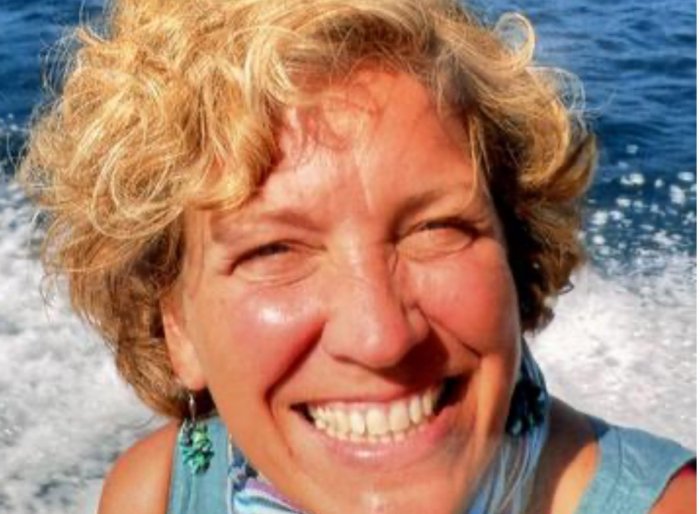Like many newspaper readers, I’ve been following the accounts of the serial killings near Gilgo Beach, along Long Island’s South Shore, with a mixture of horror at the acts themselves and relief that a likely perpetrator is under arrest. Evil at this scale is almost inevitably riveting, and such cases cry out for justice. But I have yet to be surprised by a single element of the case that has thus far been brought to public attention.
Not by the number of victims — perhaps eleven in all. Not by the fact that the case lay cold for a decade or that the victims (with the exception of one toddler) all appear to have worked in the sex trade. Not by the long-overlooked clues or the role of sensational TV shows in helping bring the killer to light, or by the top-notch detective work that first limited the search to a small slice of a single Long Island town, then seems to have sealed the deal when a single hair found on one of the victims.

The Suspected Gilgo Beach Killer — Not A Surprise?
Least of all have I been surprised by the man now charged with three of the murders and suspected of more: Rex Heuermann, a 59-year-old Long Island architect, husband, and father, with offices in mid-town Manhattan. Serials killers are often just your Average Joe … except.
If anything, all those revelations have simply been for me a painful case of déjà vu all over again. In the five plus years I spent in the FBI’s Behavioral Science Unit, I had a hand in over 800 blood-drenched cases, many of them the work of serial killers, often gory beyond belief and committed out of a fetid swamp of wants, needs, compulsions, warped motivations, and — literally — who knows what else.
The Hannibal Lecters of the world were our daily diet at the BSU, in my case almost literally. I helped coach Jodie Foster for her Oscar-winning performance as Clarice Starling in The Silence of the Lambs, a movie, and a role way too close to my own life.
Why Killers Kill
Murder is not a rational act, but the BSU’s job was to search for reason amidst the debris of awful violence, sometimes years after the acts had been committed. Cases didn’t come our way until local investigators had hit a wall, and with murder that happened far more often than you might expect. Less than two-thirds of all homicides get solved annually, and the back-up of “cold cases” — murders on the books but with unknown perpetrators — grows year by year. Today, there are more than a quarter million such cases: one unsolved homicide for roughly every 1,300 Americans.
Our BSU office, part of the FBI Campus at Quantico, Virginia, was set up much like a think tank. We had a big conference table where we would gather to discuss the violent crimes that had been directed our way, sometimes with the police officers who had been working the case and often with photos of the victim (or victims) and the crime scene(s) spread out on the table in front of us.
In a sense, serial killers, as Rex Heuermann is alleged to be, made our job easier because, even if we couldn’t make sense of the motivation behind the murders, we could at least search for a pattern in the acts. First, though, we had to determine if we were in fact dealing with a single perpetrator or multiple ones or maybe, if a particular series of murders had been widely publicized, a serial killer and one or more copycat murderers.
The fact that the victims were, as in the Gilgo Beach case, almost all sex workers was almost immaterial. Serial killers often prey on the marginalized — those who work late hours on poorly lit streets in high-risk environments. That the Gilgo Beach victims were all found within a very narrow geographic band, just off Ocean Parkway, would have been far more revealing but still a long way from any kind of positive identification, which is why the case lay cold for more than a decade.

How Authorities Identify The Work of Serial Killers
I remember a somewhat similar case I worked on in the Philadelphia area. The victims were all homeless women. They had all been nearly decapitated and eviscerated from the navel to the neck with their organs carefully placed outside the body cavity. The crimes had all taken place within the same general location and almost certainly late at night because this kind of meticulous approach requires time, and the bodies were found within sight of normally heavily traveled streets. Further, it seemed highly likely that the serial killer had had at least some kind of surgical training — maybe as medical student or a surgical nurse.
While all that seemed valid, or a valid as such speculation after the fact can be, it didn’t sufficiently limit the universe of possible suspects, so after we were through meeting, I hung those photos all around my office walls, hoping the victims might somehow speak to me. They didn’t, and the case is still cold today, but the photos did claim an additional victim, although not fatally.
While I was away on other business, a Congressional supporter of the BSU showed up with some staffers in tow. After my boss, John Douglas, had given the group a walk around, the staffers asked if they could look inside an office, and John volunteered mine, knowing I was gone. The staffers walked in, took one look at those photos on the walls, and the only male among them fainted dead away and cracked his head on my desk on his way to the floor.
The FBI defines “serial homicide” as “the unlawful killing of three or more victims in separate events,” as opposed to “mass killing” (three or murders in one event with no defined time lapse between them) and “spree killing” (murders that occur at two or more locations but are driven by the same burst of anger, rage, or whatever the motivation might be). Notice that none of the categories has a top number. In fact, with most serial killers the top number is unknown and often unknowable.
Serial killers murder for the most part out of compulsions that recur sometimes in a sine curve that we could plot at BSU but more often on a random basis. Some killers finally tire of the pressures of it all and turn themselves in. Edmund Kemper, one of the larger monsters of the later 20th century, treated himself to one last bout of savagery — gruesomely murdering his mother and one of her friends — then drove a thousand miles away and called the police to come get him.
Mostly, serial killers keep at it until they’re caught. Even if they confess to their acts, though, their numbers are always suspect. Ted Bundy is officially credited with twenty victims for whom identifiable remains have been recovered, but toward the end of his life, as he tried to stave off execution, Bundy doled out or hinted at many more victims. How many more actual murders went to the electric chair with Bundy is unknowable, but my guess is well more than a handful. And I wouldn’t be the least surprised if more corpses can eventually be linked to the Gilgo Beach killer as well, maybe for decades to come.

Cases Jana Monroe Worked On
The sheer volume of cold homicide cases was one reason we often turned to John Walsh and his America’s Most Wanted TV show for help. Every case we fed John seemed to generate dozens of tips, some of them central to bringing bad actors to justice. I was still an FBI field agent in Tampa — not yet a part of the BSU — when America’s Most Wanted aired a short segment on a college professor who disappeared shortly after his wife turned up dismembered in a barrel.
Tips flooded in, and within a few days we learned that he had checked into a motel run by the University of Tampa. We had to vacate the rooms adjacent to the professor’s before my then supervisor, Fred Eschweiller, and I moved in for the arrest. Even then, though, we had to overcome one other small problem. After I shouted out “FBI, Open Up” Fred and I both rushed in the room at the same time … and got stuck in the door jamb. Happily, the professor had already scurried behind his bed.
Most of all, what solved the cases presented to us was old-fashioned first-rate detective work. In our sessions around BSU’s conference table and in the privacy of our offices, we reexamined clues, held old assumptions up to a new light, and pored over case records for anything that had fallen between the cracks. It’s still astounding to me decades later how often the answers we were looking for were hiding in plain sight, just like that single strand of hair in the Gilgo Beach murders.
Example: Early on June 4, 1989, the bodies of a woman and two teenage girls began floating to the surface in Tampa Bay, launching a manhunt that went absolutely nowhere. It took only a few days to identify the victims as Joan Rogers and her two teenage daughters, Michelle, age seventeen, and fourteen-year-old Christe, all vacationing in Florida from their home in Ohio and all of them sexually assaulted before they were murdered.
We — I was still an FBI field agent when this case began — quickly found the motel where the Rogers had checked in on the afternoon of June 1. We knew where they had dinner that evening, and we found the Rogers’ car parked just off a causeway, beside Tampa Bay. We even found a piece of notepaper in the car, on which one someone had written down directions to where the car was found. And from there, the case went ice cold.
Jump ahead now a full year or more. By now, I was part of the BSU, and detectives from St. Petersburg, which had jurisdiction over the Rogers case, had come to us for help. As per usual, we gathered at our think-tank table. We took it all from the top: the contents of the Rogers’ stomachs obtained by autopsy; the sorts of knots used to secure them, the cinder blocks before the victims were thrown overboard; everything, even that little scrap of paper with the directions on it. And finally it hit me. This scrawl didn’t look like schoolgirl penmanship, or any woman’s writing, so we had Ohio agents show the note to Hal Rogers, the still-grieving husband and father of the victims, and he confirmed that no one in his family had written that note, and suddenly the case lived again.
At my suggestion, we blew that scrawl up to maximum size, pasted it on billboards all around the area under the heading “WHO WROTE THESE DIRECTIONS?”, and within 48 hours two unrelated people had identified the writing as that of 46-year-old Oba Chandler, who would eventually be executed for the three murders twenty-two years after committing them.
It wouldn’t be fair to make assumptions about serial killers from the Gilgo Beach case. Rex Heuermann is presumed innocent until found guilty. But is there any way of predicting where these frightening predators will next appear?
To one extent or another, every case I worked on during my three decades in law enforcement broadened my horizon of the possible, but not always in the most comforting way. Under certain conditions, I came to learn, a lot of people can do a lot of things that no one would have thought possible of them: heroic feats, incredible acts of generosity, and horrific crimes that everyone around them would have sworn on a stack of Bibles or whatever you use that this individual absolutely, positively could not have committed.
Trust me, they can and they will. If I believed otherwise, I would have slept far better when these hearts of darkness haunted my nightly dreams.
Jana Monroe is the author of Hearts of Darkness: Serial Killers, The Behavioral Science Unit, and My Life as a Woman in the FBI. She had a distinguished twenty-two-year career in the FBI, where she held a variety of field investigative and operational roles, including special agent in charge in Phoenix and Los Angeles, and she was the first assistant director of the FBI Cyber Division. After retiring from the Bureau, Monroe entered the private sector. She lives in Arlington, Texas.
































